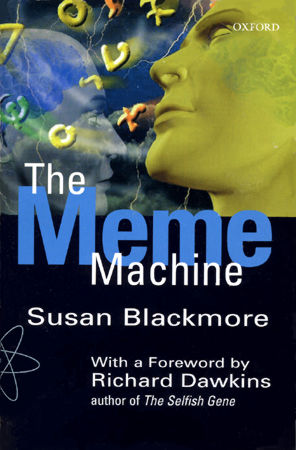If you’re interested in other applications of evolution and natural selection outside of the genetic and biological worlds, listen to this interview between Matt Ridley and Russ Roberts.
In this conversation, Ridley briefly discusses the emergent properties of society, culture, our economy, language, law, morality (and religion’s role in it’s development), and the invention and commercialization of technology. His “General Theory of Evolution” is meant to sit side-by-side with Darwin’s Specific Theory of Evolution, exactly like Einstein’s Specific & General Theories of Relativity. If you want more, you’ll enjoy Matt Ridley’s book The Evolution of Everything: How New Ideas Emerge.
For another take on a more general application of evolution and natural selection to fields beyond biology, check out The Meme Machine by Susan Blackmore
It’s fitting that the forward is written by Richard Dawkins because Blackmore picks up where Dawkins left off in his popular & controversial book, The Selfish Gene (Note: There isn’t a gene that makes people selfish. Genes, themselves, are selfish because they compete for scarce resources in order to reproduce). Dawkins ends The Selfish Gene by proposing a word for a “unit of cultural transmission,” a parallel to the concept of genes. He calls this “new replicator” a meme. The word meme is short for mime, Greek for “imitated thing.” I personally don’t think that either Dawkins or Blackmore go far enough in their definition of meme. To me, memes do not sit side-by-side with genes. To me, the field of memetics encompasses genetics. All genes are memes, but not all memes are genes. So I define a meme as any information that is passed on by imitation.

